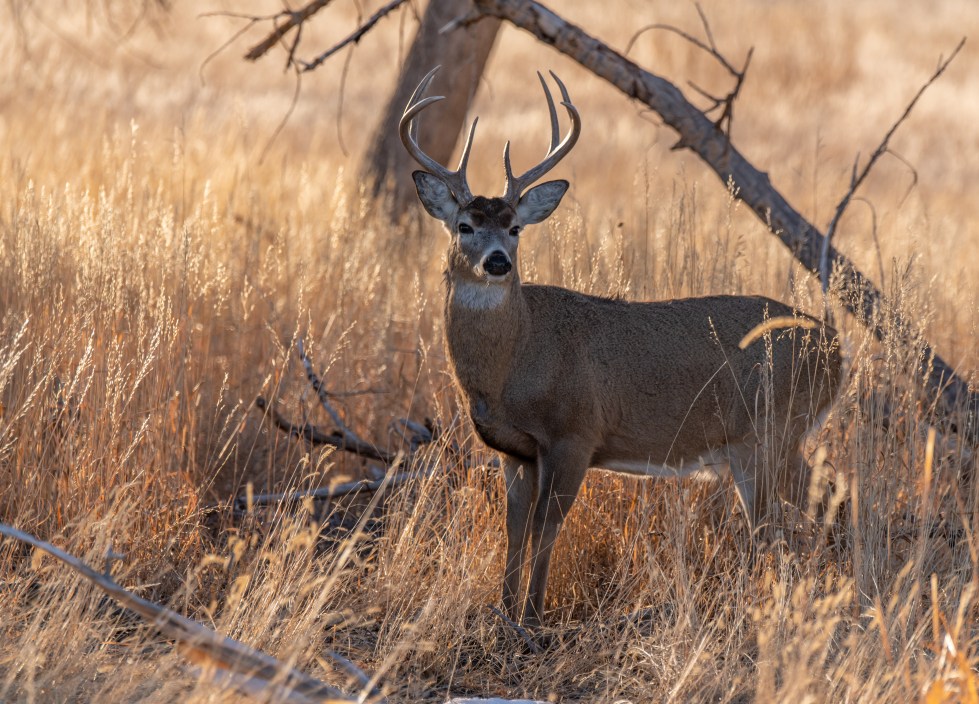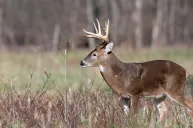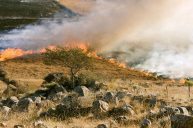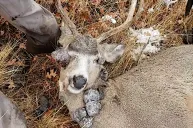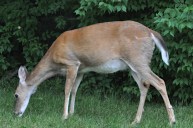First thing's first: Despite the nickname "Zombie Deer Disease," chronic wasting disease (CWD) has absolutely nothing to do with zombies.
As the legend goes, many years ago, a deer biologist at a national wildlife conference was chatting about chronic wasting disease (CWD) with several other wildlife professionals. Excited—and at the height of America's obsession with the TV show The Walking Dead—the biologist exclaimed: "These proteins act like they're living, infectious agents, but they're not. It's like a zombie disease!"
Just like that, news headlines ran with the click-inducing suggestion that CWD created an actual half-dead, half-alive zombie deer. "It got out there to the detriment of wildlife agencies and their CWD management efforts," Matt Dunfee, the director of the Chronic Wasting Disease Alliance (CWDA) told Wide Open Spaces. "It doesn't take much to be irresponsible when you're reporting on an incredibly difficult disease like CWD. It's as simple as using a word like 'zombie' to turn an educational opportunity into hyperbole that makes the problem worse."
Despite the best efforts of conservation organizations, state wildlife management agencies, and even apologetic media outlets, many in the general public still refer to CWD as the "zombie deer disease" and to deer infected with CWD as "zombie deer." However, those apocalyptic ideas are far from the truth. Deer with CWD simply have a disease.
Let's backtrack for a moment. What did that biologist mean by "proteins?" How can a disease be "nonliving"? Is CWD a disease, a virus, or something else entirely? What exactly is "zombie deer disease"?
What Is "Zombie Deer Disease" (aka Chronic Wasting Disease)?
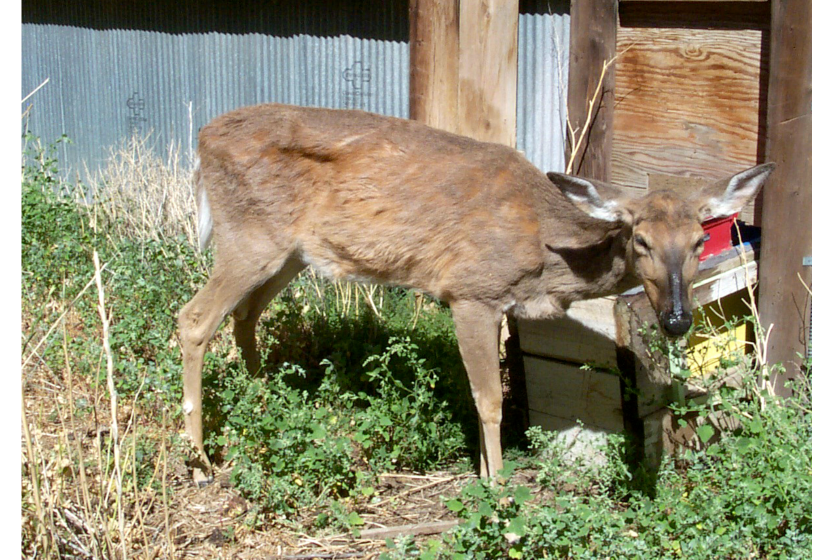
Wyoming Game and Fish Department
According to the Chronic Wasting Disease Alliance, chronic wasting disease is an always-fatal nervous system disease found in whitetail deer and other cervids. Cervids are members of the family Cervidae, or deer, elk, moose, and reindeer. However, the so-called "zombie deer disease" isn't really an infectious disease in the way you and I understand it.
CWD is not caused by a living agent like a virus or bacteria; therefore, it's not a viral infection or a bacterial disease. It's part of a family of diseases called transmissible spongiform encephalopathies (TSE). Creutzfeldt-Jakob disease and mad cow disease fall into this family, too.
If you can remember from high school biology class, proteins in the body work because those molecules are a specific shape. These specific shapes are recognized by the cells in the body, and correctly folded proteins work properly and play their role in sustaining life. Usually, the body gets rid of any misfolded proteins, but other times, their incorrect shape means they don't get disposed of.
This is the case with TSEs; a cervid's body can't get rid of CWD prions. (The word "prions" refers to abnormal, defective proteins that can be transferred from one animal to another.) This allows those prions to multiply. When a normal protein gets too close to a misfolded one, the normal protein becomes misfolded, too. Large amounts of harmful misfolded proteins accumulating in a deer's body damage its nervous system, especially its brain.
Two years may go by before cervids infected with CWD even begin to look sick. "This is why CWD management strategies involve limiting the amount of time infected animals come in contact with uninfected animals," says Dunfee. "We're trying to protect uninfected animals from ingesting the misfolded, CWD-causing prions."
He continues: "Honestly, we technically shouldn't use the term 'infected' because the prion disease agent isn't a virus or bacteria. This is also why vaccines won't work, and we can't 'kill' anything and clean it up out of the environment. You can't 'kill' just one type of protein in your body, which is why treatment methods don't currently exist."
What Does "Zombie Deer Disease" Do?
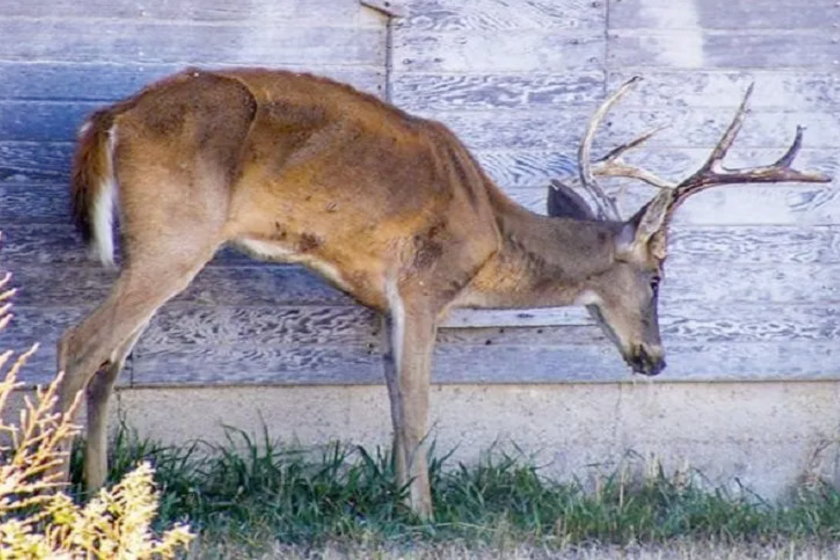
Missouri Department of Conservation
Chronic wasting disease causes a "characteristic spongy degeneration of the brains of infected animals resulting in emaciation, abnormal behavior, loss of bodily functions and death." Simply put, it's a devastating and fatal disease.
For the first 16 to 36 months, deer with CWD appear normal while the prions build up in their systems. Unfortunately, during this long incubation period, infected deer continually shed the infectious prions into the environment, exposing other susceptible animals to the disease.
Usually, only when an infected animal has a few months to live does it begin showing outward signs of sickness. Often, other causes of death—such as other diseases, predators, or cars—will get to the animals first.
A dear that makes it to the the late stages of the disease loses its appetite and eats far less food, so the most obvious sign is weight loss or emaciation. Excessive drinking, urination, and drooling are also signs of late-stage CWD.
After a deer begins to exhibit obvious signs of illness, lesions in its brain make them develop odd mannerisms. Signs of illness can include avoiding other deer, acting listless, lowering their head oddly, or repetitively walking in a circle—perhaps other reasons the "zombie deer disease" moniker has stuck. But it's important to keep in mind that other sicknesses besides CWD can cause these symptoms in cervids. The only way to know if an animal has CWD requires examining and testing the brain, tonsils, and lymph nodes post-death.
Where Did "Zombie Deer Disease" Come From?
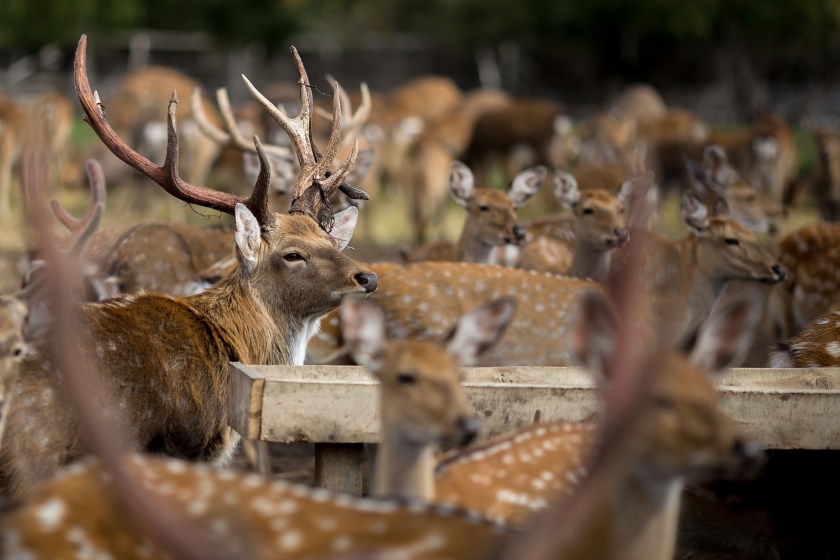
Getty Images, Liliya Akhmetzyanova
No one knows with certainty where chronic wasting disease came from. It was first seen in captive mule deer in Colorado in the 1960s. Since then, CWD spread throughout the U.S., Canada, and several other countries. CWD may have arisen spontaneously in wild deer populations or captive ones.
Some scientists theorize that CWD is a result of the sheep prion disease, scrapie, adapting into a form that was contractable by deer. However, there isn't any proof to support this idea.
Simply put, there's no way to be sure. I've even heard that CWD originated as a bioagent to eliminate deer populations, so hunters couldn't go deer hunting anymore.
READ MORE: How CWS Has Changed How Some American Deer Hunters Go About Their Season
What Causes "Zombie Deer Disease"—and Can Humans Get It?
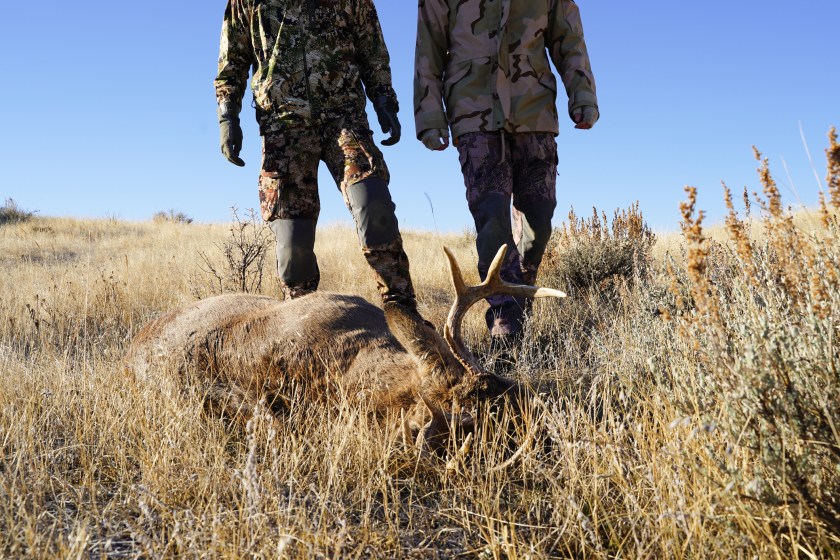
Getty Images, Melissa Kopka
So what causes zombie deer disease in free-ranging ungulate populations? CWD is transmissible to uninfected deer via infected animals' feces, urine, and saliva. Because CWD isn't alive, it never dies. It can exist in the environment for decades.
That means unless we can figure out how to remove misfolded deer prions from nature, there's always a risk that uninfected cervids will become infected with CWD simply by existing in the same environment as infected animals, with no direct contact or sharing of bait piles required. Merely being exposed to misfolded prions via direct animal-to-animal contact or contact with soil contaminated with CWD prions can cause CWD in an uninfected animal.
Thankfully, to date, there have been no reported cases of CWD infection in people, according to the Centers for Disease Control and Prevention (CDC). While the CWDA doesn't recommend eating deer meat infected with CWD, it's believed that CWD isn't transmissible to humans.
This hunting season, consider getting your deer tested for CWD. Many state agencies provide free CWD testing for hunters, so you can know if your deer meat is infected or not.
The Takeaway
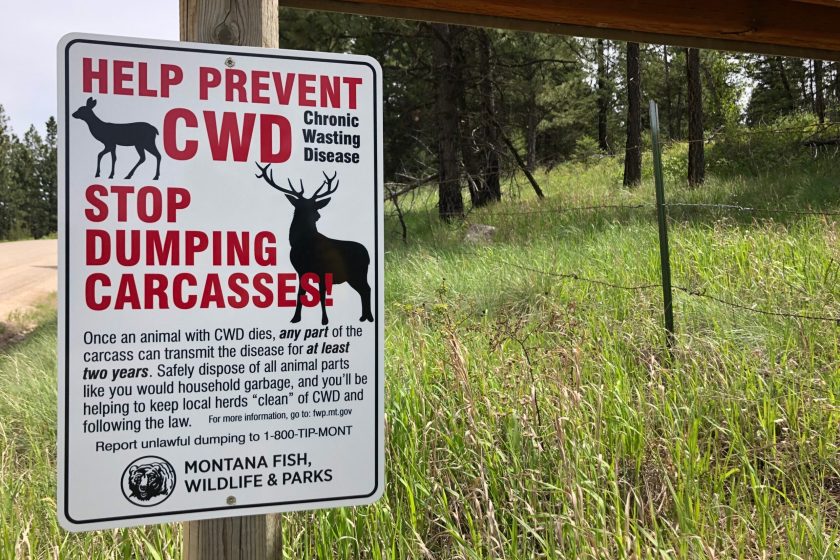
Montana Wildlife Federation
Whatever the original cause, CWD exists in both the wild and in captive cervid herds, and will for the foreseeable future. There's no way to kill it (remember, prions aren't alive in the first place), cleanse it from the environment, or rid infected animals of it; we Americans must deal with it.
Thankfully, we choose to do so by researching it extensively and managing it scientifically in the 31 states where cases of CWD have been recorded in.
"CWD is a disease that you don't measure in years; you measure it in decades," says Dunfee. "Support your local cervid herd's health by supporting the proven management actions that we've learned over the last 20 years, even if that means removing more of the individuals in populations that are most likely to have the disease."
If you care about healthy deer herds and access to deer hunting for future generations, help support your state's CWD management strategies this fall. This can include:
- Shooting mature bucks, since mature male cervids are the number one carrier of CWD, according to data from the Chronic Wasting Disease Alliance
- Taking your deer carcass to a landfill instead of dumping it in your pasture for other animals to scavenge and gather around
- Removing the bait piles from your property so potentially-infected wild deer have less incentive to congregate in one area and expose others
The best way to stay informed about how to help protect your local deer herd against CWD is to contact your state agency and ask about ways that you can help.
